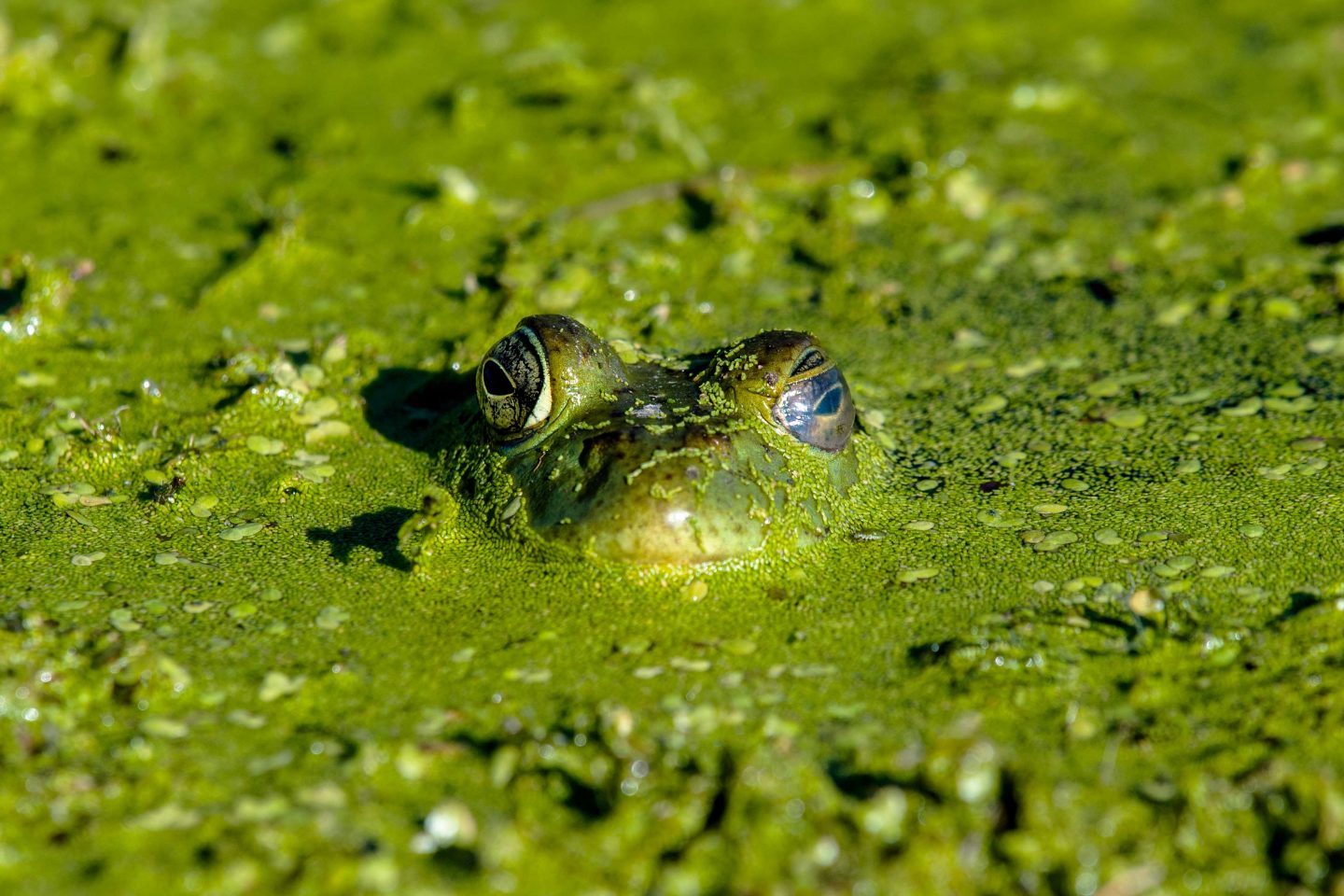
By Monica Macoubrie, Wildlife Education Specialist
There’s something magical about hearing the short trill of a Cope’s gray treefrog from high up in the trees or spotting a barred tiger salamander tucked inside a prairie dog burrow. It’s a sure sign that amphibians are active—and what better time to celebrate them than during Amphibian Week, May 4-10?
From the camouflaged tree-dwellers to the burrowing salamanders of the plains, Nebraska is home to some fascinating amphibian species. These often-overlooked critters play vital roles in our ecosystems and deserve time in the spotlight.
Boreal Chorus Frog
The boreal chorus frog may be tiny — rarely growing over 1.3 inches long — but it’s one of Nebraska’s most widespread and well-known amphibians. Typically, golden brown to bronze with three dark stripes down its back and a pair running along its sides, this frog blends in well with its surroundings. Its granular, or bumpy skin and creamy white belly help it stay camouflaged in everything from open grasslands to dense woodlands.
In spring, they’re among the first frogs to be heard, often calling right after snowmelt —sometimes as early as March. Their song, which sounds like a finger running along a comb, can be heard near almost any temporary pond or puddle used for breeding.
Afterward, they’ll venture far from water, hiding under rocks or in crayfish burrows and feeding on small invertebrates, such as beetles, flies and spiders.
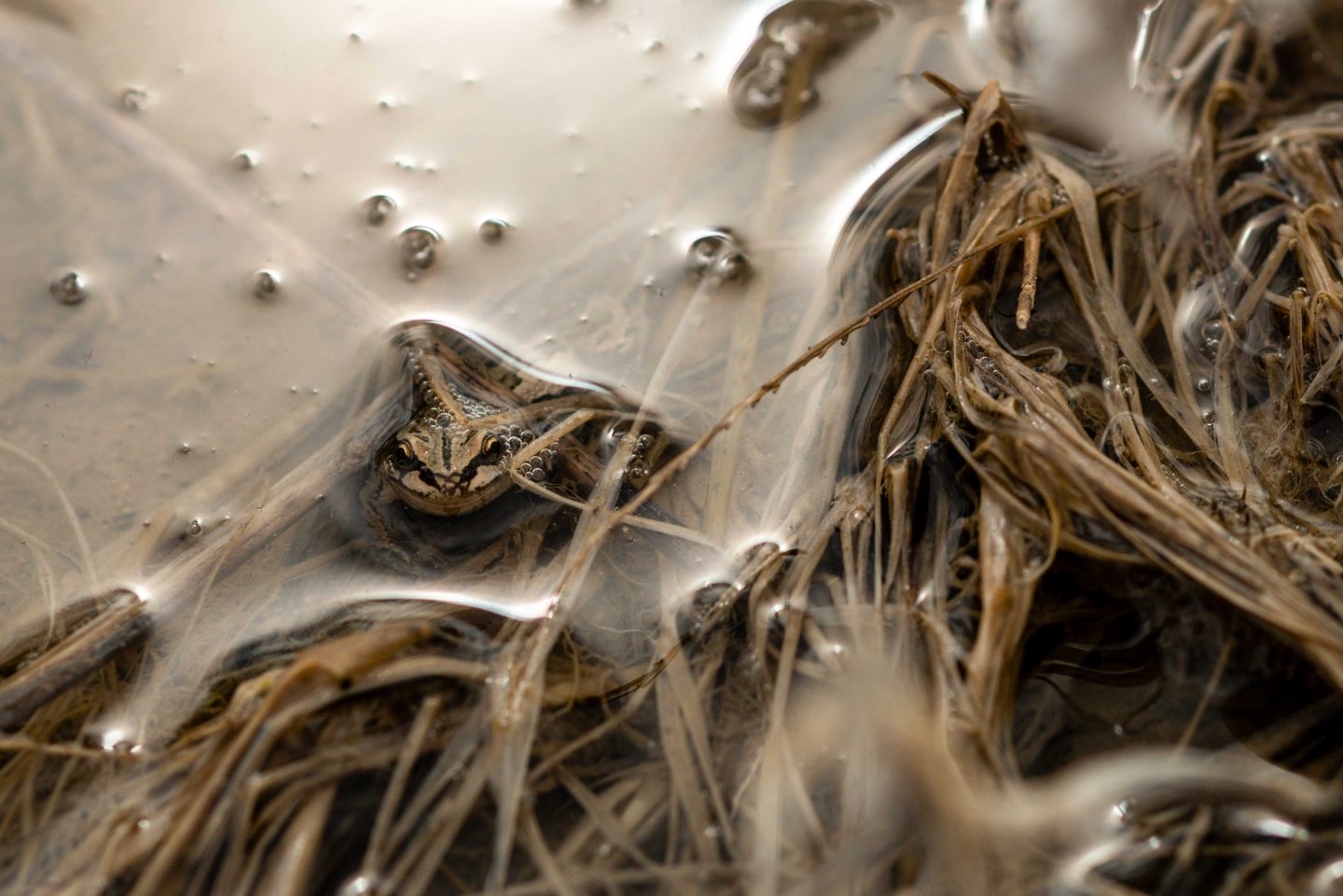
Blanchard’s Cricket Frog
Blanchard’s cricket frog is one of Nebraska’s smaller amphibians, measuring less than 2 inches in length, but what it lacks in size, it makes up for in personality and pattern. Its warty skin can range in color from reddish-brown to olive green or cream, often with a distinct dark triangle between the eyes. These frogs show a surprising variety of colors and markings — even within Nebraska.
Though they belong to the tree frog family, cricket frogs spend most of their time on the ground, often along the edges of ponds and streams with thick vegetation for cover. In the fall, they may be found farther from water, especially around limestone outcrops in southeastern counties.
Their diet consists mainly of terrestrial insects, and their call — often compared to the sound of two pebbles being tapped together — is a familiar summertime sound in eastern Nebraska.
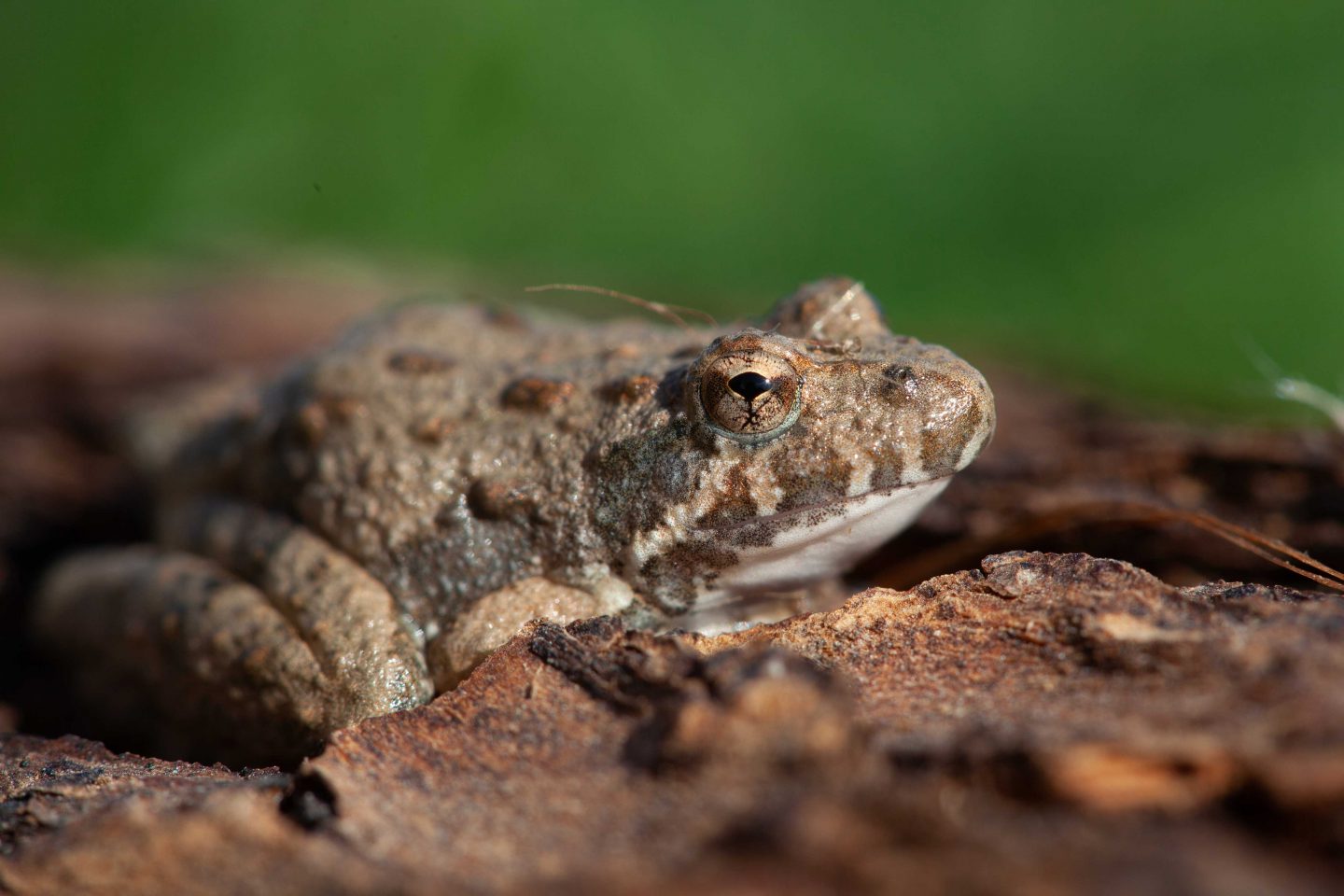
Cope’s Gray Treefrog
Cope’s gray treefrog is Nebraska’s only true tree-dwelling frog, and it’s a master of disguise. While its name suggests it’s always gray, individuals can also appear bright green, tan or light brown — blending in perfectly with leaves and bark.
Adults typically measure between 1–2 inches in length and are easily recognized by their large, sticky toe pads, which help them cling to trees, and the flash of yellow-orange on the inside of their thighs.
During the day, they sleep tucked into tree hollows or perched on leaves, especially in riparian woodlands and oak savannas. Though currently most common in southeastern Nebraska, their range is slowly expanding as more prairie streams grow into wooded areas. These treefrogs feed on insects and spiders, and their call — a short, birdlike trill — often fools listeners into thinking a bird is nearby when it’s actually this tiny camouflaged climber.
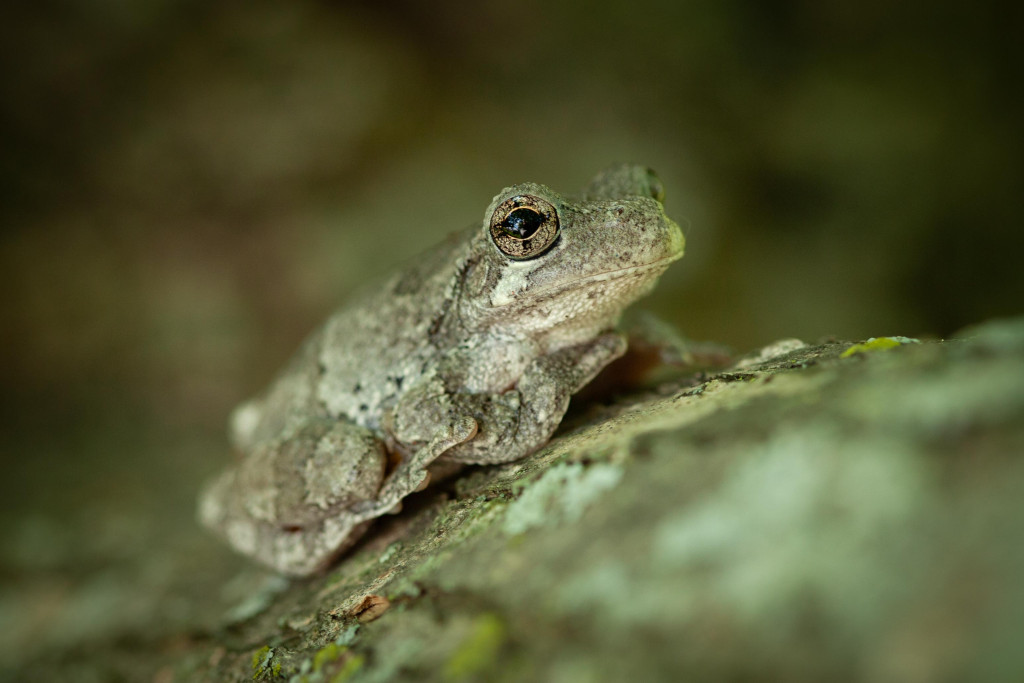
Woodhouse’s Toad
The Woodhouse’s toad is one of Nebraska’s most widespread and commonly encountered toads. Ranging in color from gray and tan to yellowish-brown, this toad is often recognized by the distinct white stripe running down the center of its back. While it closely resembles the American toad, it has narrower parotoid glands (larger bumps on the back) and a small black spot on its otherwise white chest.
Averaging 2.5 to 4 inches in length, Woodhouse’s toads are highly adaptable, thriving in habitats from grasslands and woodland edges to backyards, parks and even golf courses.
At night, they emerge to feed on insects and other arthropods, often seen near streams and riverbanks like those of the Platte, Niobrara and Missouri. Their call — a short, nasally “WAHHHHH” reminiscent of a sheep — can be heard during the breeding season, echoing across Nebraska’s warm summer nights.
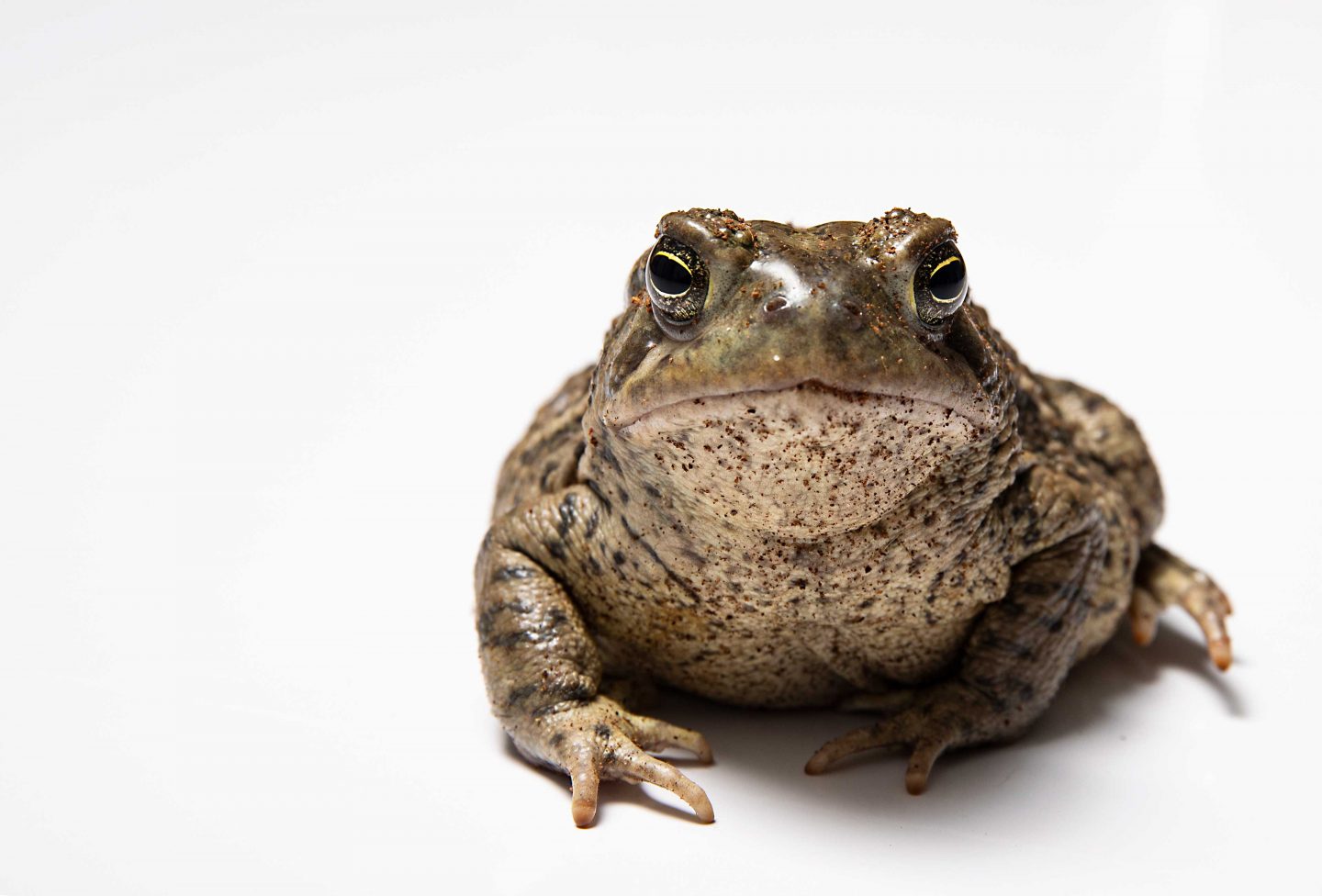
American Toad
The American toad has a mix of brown, reddish-brown or olive-green coloring with dark spots on its back, each spot usually featuring one or two large warts. Its parotoid glands—those big, kidney-shaped lumps behind the eyes — are a key feature, and its creamy white underside is speckled with black. Growing to about 2 to 3.5 inches, these toads can be found in riparian woodlands and deciduous forests along the Missouri River, using temporary and permanent wetlands for breeding.
In Nebraska, they’re mainly in the eastern counties, like Washington, Douglas and Sarpy. The American toad’s call is a long, musical trill that lasts about 30 seconds. They feed on insects and other arthropods, but because of their limited range in the state, they’re considered a species in need of conservation.
Barred Tiger Salamander
Barred tiger salamanders show off some variation depending on where you find them in Nebraska. In the southern part of the state, they’re known for their bold, bright yellow bars on a mostly black or dark green body. But if you head to the Sandhills or northwestern counties, you’ll notice the color changes to more of a net-like pattern, with olive green to pale yellow shades.
These salamanders typically grow to about 6 to 8 inches in length and are often found in fishless ponds — especially ones that are permanent or semi-permanent. They thrive in the arid grasslands of the Great Plains, and in western Nebraska, they’ll often take shelter in prairie dog burrows or those of other small mammals. Barred tiger salamanders are opportunistic eaters, catching anything they can, including other salamanders and larvae.
Fun fact: Their larvae can grow into two different forms — typical or cannibalistic. The cannibalistic ones are easy to spot because they have huge heads and are aggressive predators. And, these salamanders are long-lived, sometimes reaching up to 20 years in captivity!
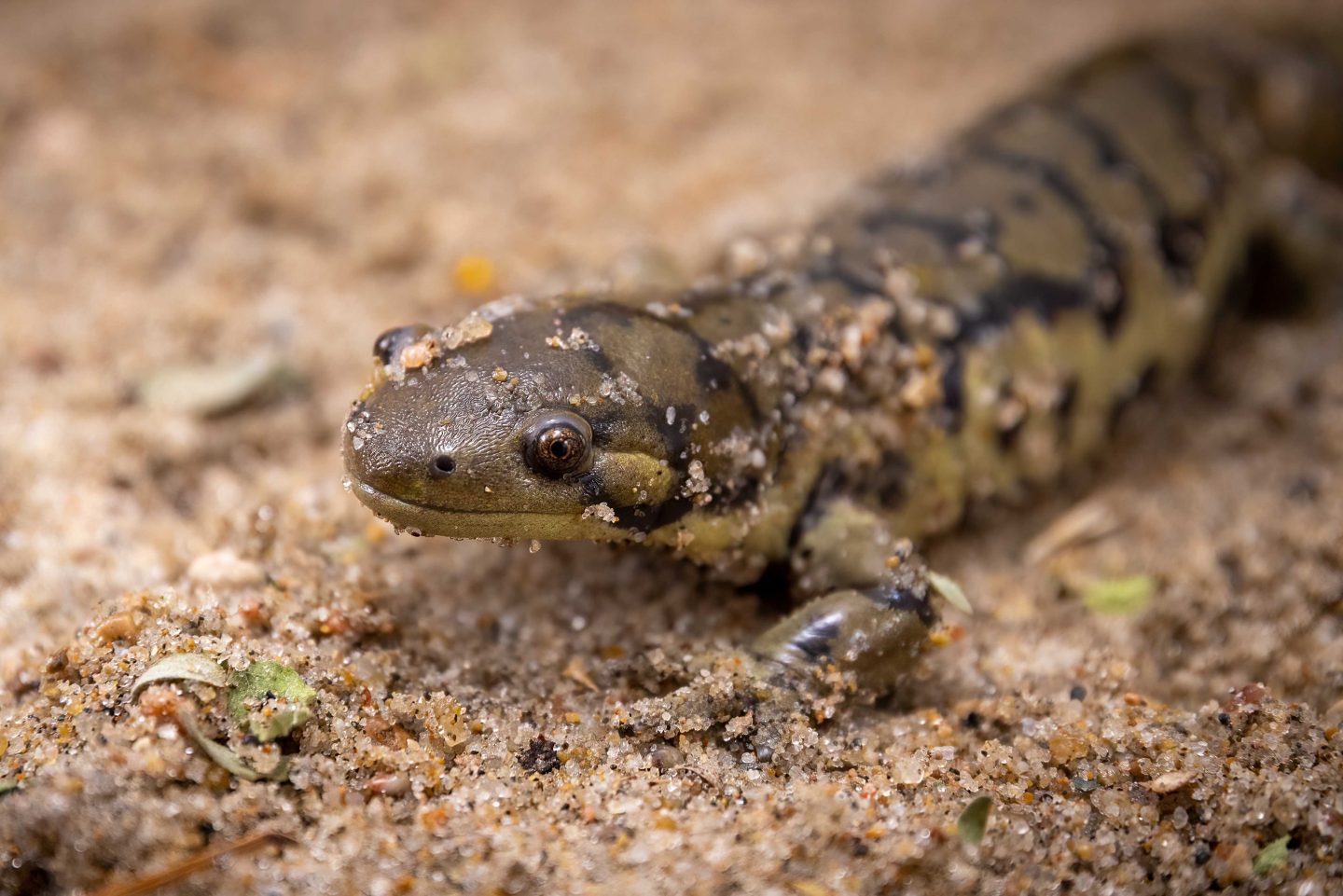
Amphibians may be small, but they play a big role in healthy ecosystems. From keeping insect populations in check to serving as food for a variety of other wildlife, they’re a vital part of the food web. They’re also considered environmental indicators — meaning their presence (or absence) can tell us a lot about the health of the habitats they live in.
Amphibian Week is a great time to appreciate these often-overlooked creatures, learn more about the species in our own backyards, and think about ways we can help protect them. Whether it’s a toad calling from a roadside ditch or a salamander hiding under a log, these animals remind us of the incredible diversity that exists right here in Nebraska.
To learn more about these species and other amphibians in the state visit the Amphibian Page on the Game and Parks website.
